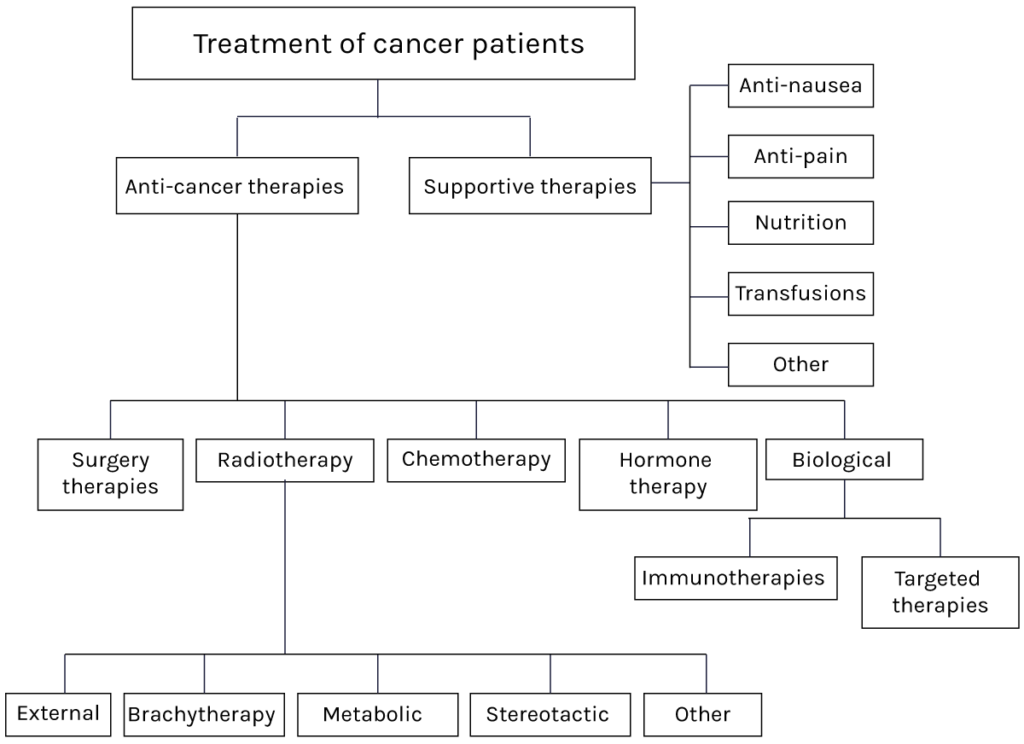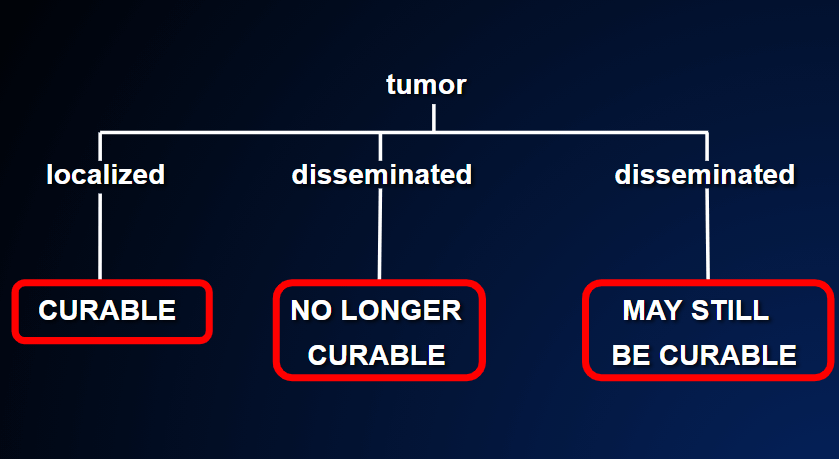Once the diagnosis has been made and staging has been performed, initial treatment and therapy begins. (FIGURE 5) (HOW MANY WAYS CAN TUMORS BE TREATED?)

Anti-cancer therapy can follow 4 distinct routes:
- surgical operation;
- medical treatment (generally chemotherapy) followed by surgery;
- radiotherapy or chemo-radiotherapy instead of surgery;
- medical treatment alone (chemotherapy, hormone therapy, biological therapies) if the disease is not curable by means of surgery or other local therapies.
The choice of these 4 treatment modalities depends on the type of tumor and the stage. However, there is a clear distinction between the first three modalities and the fourth; the first three are aimed at eliminating the tumor completely, in that the limited stage of the disease makes this possible (initial stages). Their intention is therefore said to be RADICAL (complete) elimination.
The fourth course of action, by contrast, is adopted when the disease is already advanced at the time when it is discovered (advanced stages). As the tumor can no longer be eliminated, therapy is aimed at slowing its growth and shrinking it. These therapies are called PALLIATIVE. Naturally, there are also exceptional cases (FIGURE 4) WHY IS THE STAGE SO IMPORTANT?

- Sometimes the tumor is at a very initial stage (said to be “localized”) and can be directly removed by means of a surgical operation, without any other therapy. In other cases, it is so small that it can be removed by means of a simple procedure performed under local anesthesia in the outpatient department.
- Other times, the local extension of the tumor is so great that it cannot be removed surgically at the time when it is discovered; it can, however, be removed surgically at a later date if it can first be reduced in size by means of medical therapies, with or without radiotherapy. This condition, which is often observed in cases of cancer of the lung, rectum, uterus and pancreas, is called “locally advanced”. Naturally, it is a more difficult situation than that of a localized tumor.
- In other cases again, research has shown that the use of radiotherapy (which acts only locally), either alone or combined with chemotherapy, is just as effective as surgery in terms of achieving a cure. For this reason, in localized or locally advanced stages, these options may be preferable, especially in patients in whom surgery would carry a high risk.
- Finally, in the case of stage-4, advanced, metastatic disease, medical therapy is started directly, without surgery.
